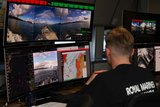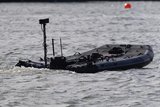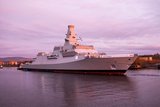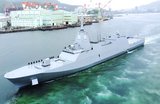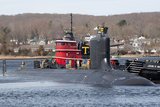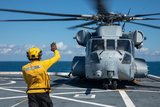Boeing delivers first Orca UUV to US Navy
Boeing has been building five Orcas for the US Navy. (Photo: Boeing)
Boeing has delivered the first Orca Extra Large Uncrewed Undersea Vehicle (XLUUV) to the US Navy (USN) following completion of testing earlier this month.
Orca has been described by its manufacturer as a new class of autonomous submarine that can perform long duration critical missions and support naval forces.
Boeing began work on Orca when it started development of Echo Voyager as a proof-of-concept XLUUV and testing of the system began in 2017. Boeing has been building five Orcas for the USN in partnership with Huntington Ingalls Industries.
Related Articles
US Navy’s Orca programme concludes design reviews
Boeing continues DARPA Hunter XLUUV work
Boeing completes Orca large UUV trials and moves to next stage
Echo Voyager, described by Boeing as ‘the world’s only vehicle of its size and capability’, has spent more than 10,000 hours operating at sea, during which time it has transited hundreds of nautical miles autonomously.
Boeing Maritime and Intelligence Systems vice-president Ann Stevens said: ‘This is the culmination of more than a decade of pioneering work, developing a long-range, fully autonomous undersea vehicle with a large payload capacity that can operate completely independently of a host vehicle.’
In August 2023 Boeing announced it had completed the integration of a 10.4m payload section of its Orca built under a DARPA contract and was preparing to go back out to sea for further trials with the payload section. The integrated version is approximately 26m long and weighs more than 73,000kg.
In July 2022, Boeing received an US$8.51 million contract modification from DARPA for Option 3 of the Hunter Phase 2 programme taking the total cumulative face value of the contract to $36.8 million.
Related Equipment in Defence Insight
More from Naval Warfare
-
![Hanwha wins Australian government approval to increase its stake in Austal]()
Hanwha wins Australian government approval to increase its stake in Austal
The contract would mean the two shipbuilders can collaborate strategically and enhance shipbuilding capabilities in Western Australia.
-
![Royal Australian Navy sizes up modernisation plans for new and existing capabilities]()
Royal Australian Navy sizes up modernisation plans for new and existing capabilities
The Australian navy is pushing ahead with its efforts to modernise its workforce and capabilities while balancing risky submarine upgrades, ageing Collins-class boats and a shrinking minehunter fleet. Head of navy capability RAdm Stephen Hughes updated Shephard on the force’s progress.
-
![UK to join US Navy’s Virginia-class submarine assembly effort to speed up construction]()
UK to join US Navy’s Virginia-class submarine assembly effort to speed up construction
The expansion of the Virginia-class submarine construction to UK shores could accelerate the project as US shipbuilders continue to fall short of delivery goals.
-
![US Navy seeks new sensors for the CH-53K King Stallion heavy-lift helicopter]()
US Navy seeks new sensors for the CH-53K King Stallion heavy-lift helicopter
The US Navy intends to publish a draft request for proposals in Q2 2026 and conduct an open competition for the supply of new electro-optical and infrared capabilities for the CH-53K heavy-lift helicopter.







